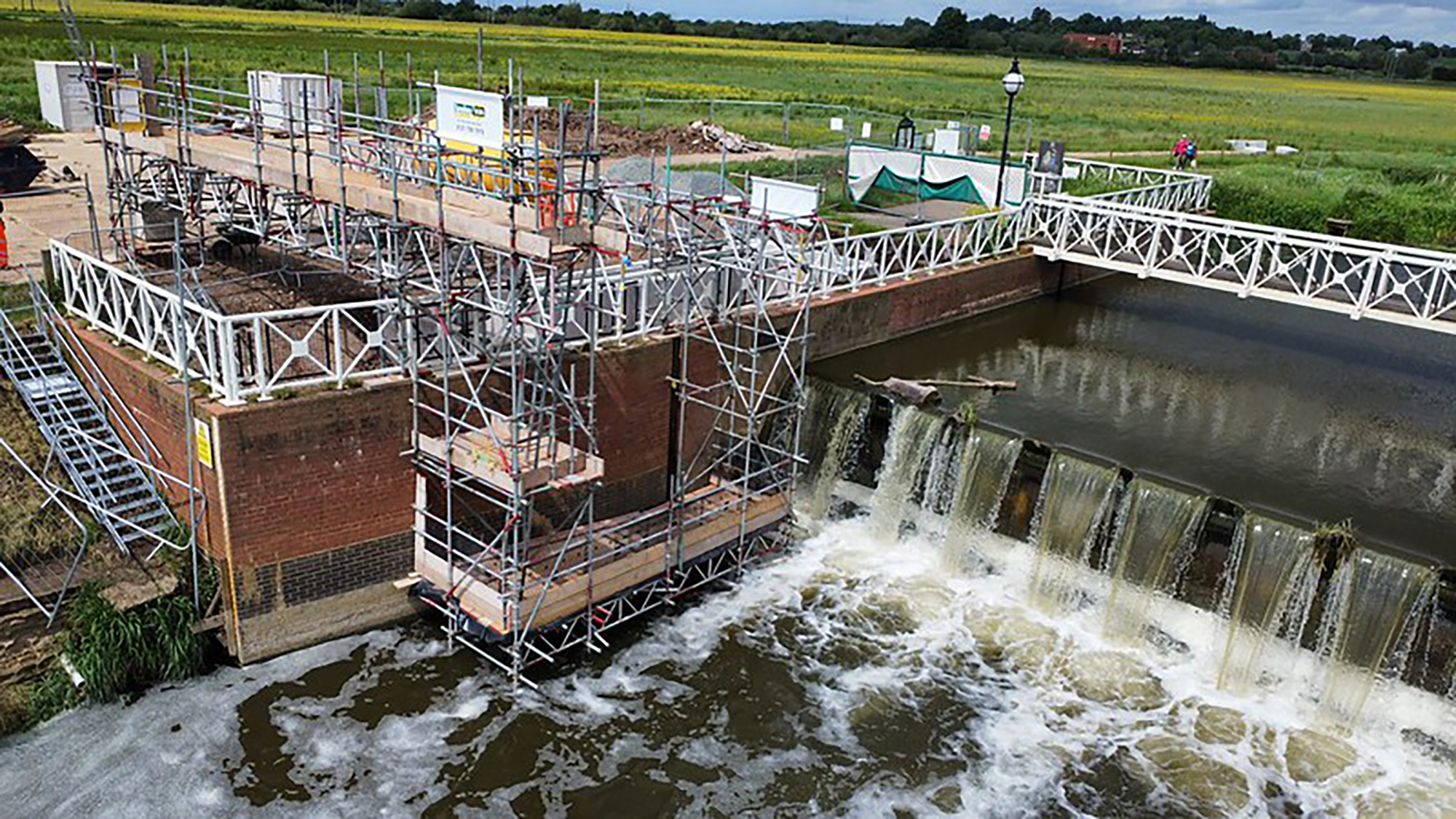Abbey Mill
Eel Pass
-
ClientEnvironment Agency
-
Value£1.1m
-
Duration42 weeks
The Jackson team used a series of innovative techniques to construct an eel pass next to the Grade II-listed Abbey Mill at Tewkesbury.
It was one of two eel passes Jackson installed on behalf of the Environment Agency on this stretch of the River Avon in Gloucestershire.

Overhang scaffolding
The weir here is mechanised and moves during flooding, so a standard channel would not work. To overcome this the upper portion of the pass is a concrete bypass channel that was constructed behind the weir wall.
To minimise excavation, the lower part of the pass is formed of an aluminium box channel, which was lowered into place and fixed to the outside wall. An innovative overhang scaffolding structure was used to enable the team to put these fixings in place.
To minimise excavation, the lower part of the pass is formed of an aluminium box channel, which was lowered into place and fixed to the outside wall. An innovative overhang scaffolding structure was used to enable the team to put these fixings in place.
Limpet dam
Eel tiles were placed in both channels to enable the eels to move through easily while the upstream opening was created using a ‘limpet dam’ which created a dry area to work in, to allow the hole to be cut into the wall.
'The aim was to make the structure as unobtrusive as possible. The finished eel pass has minimal impact on the location but hides many engineering innovations.'
Ellen Cundy, Site Agent, Jackson Civil Engineering
Visual impact
As Abbey Mill Sluice is located close to the Grade II-listed Abbey Mill, the design was intended to minimise any potential visual impact by flushing the top bypass structure with the ground.